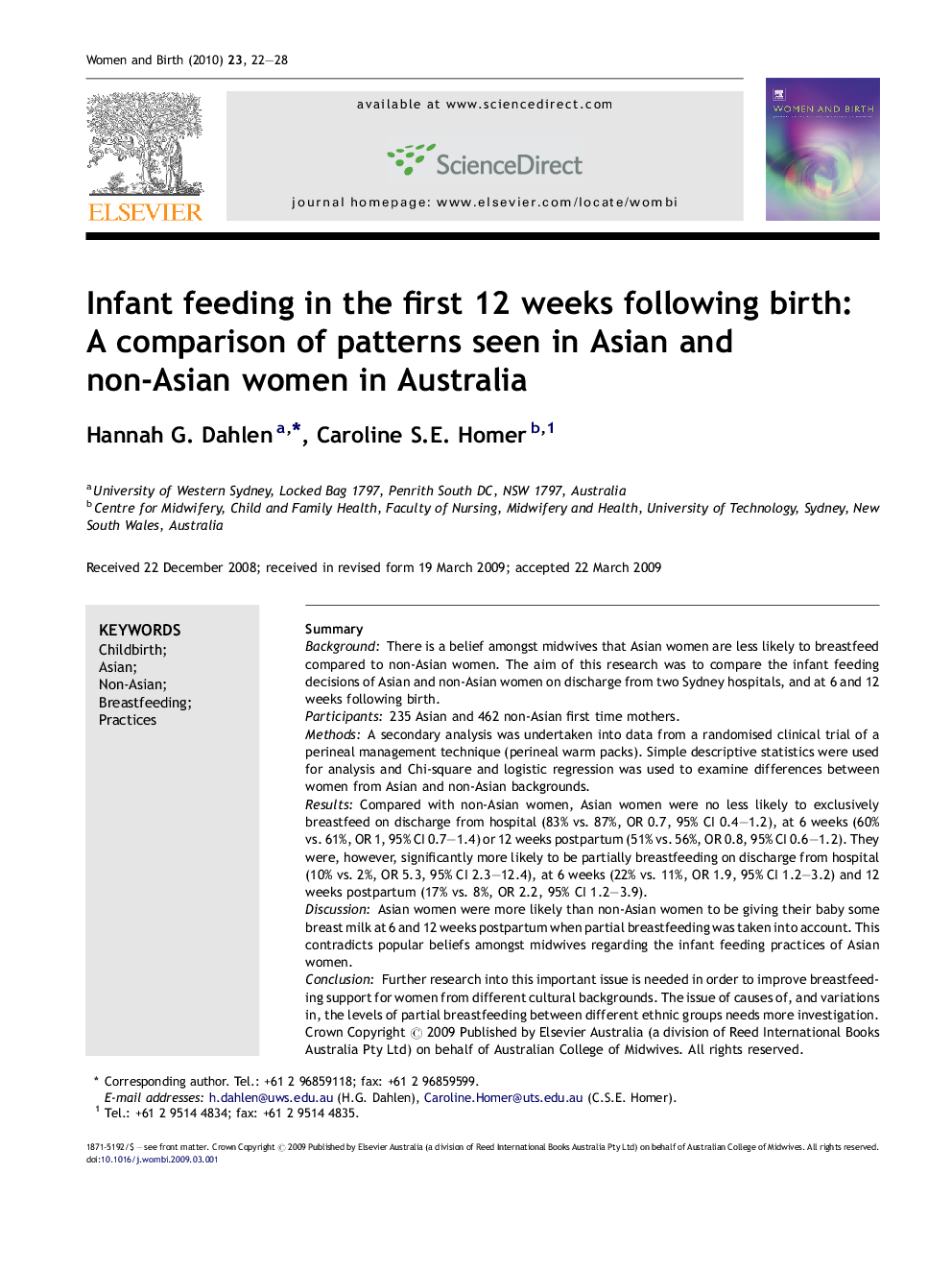| Article ID | Journal | Published Year | Pages | File Type |
|---|---|---|---|---|
| 2637153 | Women and Birth | 2010 | 7 Pages |
SummaryBackgroundThere is a belief amongst midwives that Asian women are less likely to breastfeed compared to non-Asian women. The aim of this research was to compare the infant feeding decisions of Asian and non-Asian women on discharge from two Sydney hospitals, and at 6 and 12 weeks following birth.Participants235 Asian and 462 non-Asian first time mothers.MethodsA secondary analysis was undertaken into data from a randomised clinical trial of a perineal management technique (perineal warm packs). Simple descriptive statistics were used for analysis and Chi-square and logistic regression was used to examine differences between women from Asian and non-Asian backgrounds.ResultsCompared with non-Asian women, Asian women were no less likely to exclusively breastfeed on discharge from hospital (83% vs. 87%, OR 0.7, 95% CI 0.4–1.2), at 6 weeks (60% vs. 61%, OR 1, 95% CI 0.7–1.4) or 12 weeks postpartum (51% vs. 56%, OR 0.8, 95% CI 0.6–1.2). They were, however, significantly more likely to be partially breastfeeding on discharge from hospital (10% vs. 2%, OR 5.3, 95% CI 2.3–12.4), at 6 weeks (22% vs. 11%, OR 1.9, 95% CI 1.2–3.2) and 12 weeks postpartum (17% vs. 8%, OR 2.2, 95% CI 1.2–3.9).DiscussionAsian women were more likely than non-Asian women to be giving their baby some breast milk at 6 and 12 weeks postpartum when partial breastfeeding was taken into account. This contradicts popular beliefs amongst midwives regarding the infant feeding practices of Asian women.ConclusionFurther research into this important issue is needed in order to improve breastfeeding support for women from different cultural backgrounds. The issue of causes of, and variations in, the levels of partial breastfeeding between different ethnic groups needs more investigation.
